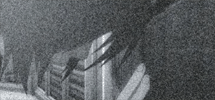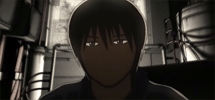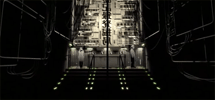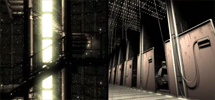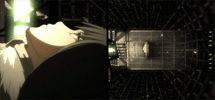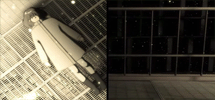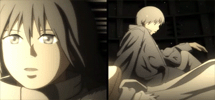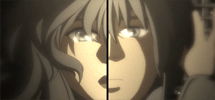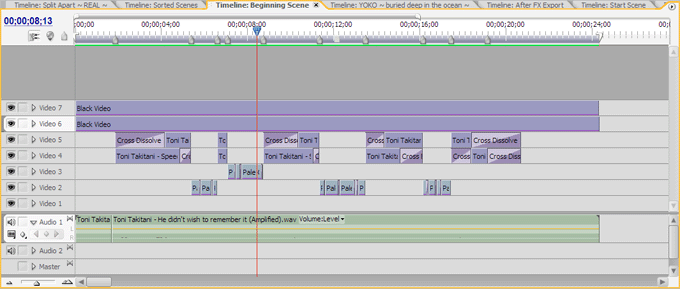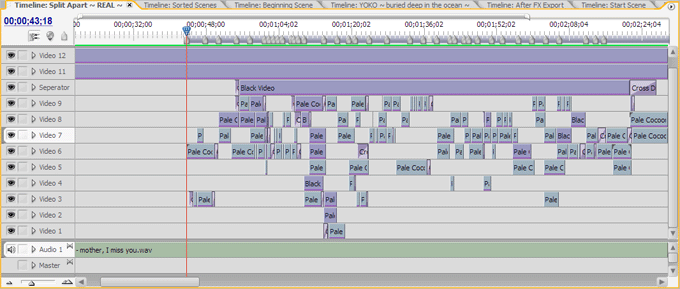
Pale Cocoon kind of disappointed me when I wanted to make an AMV out of it, because I wanted to make a romance/drama and this wasn't a romance at all (more of a science fiction drama). But looking at it the second time, I saw that were just enough scenes to make a sentimental romance drama out of it. Especially the scenes where she gets mad at the main character really brought the idea of the story of a break-up between two persons in one way or another.
multiple interpretations I made the story to be interpreted in two ways: the easy and the complicated way - this is mostly possible because of the fact the the beginning doesn't have a clear shot of how the girl looks like. The easy interpretation is actually the story of how the main character lost somebody and then flashbacks into how it all happened. I think this might be clear for most people - and this probably how most people will interpret the story.
The complicated storyline is about a guy who can't forget a girl he once lost. He then meets this girl at work - which he is more than friends with, but less than lovers. He never went further than that with the reason that she reminds him of his old love - in one way or another. This eventually becomes fatal in the relationship with the girl.

The title might sound interesting for some people, mostly because they have no clue why it is called like this. Well, the name Yoko was one of the character of Pale Cocoon. After some searching it saw that the meaning of it is "Ocean Child", which now explains something in the story of the Pale Cocoon. I immediatly thought how interesting this name actually is, having the word "ocean" in it. The thought behind "remaining deep in the ocean" is the fact how a dead person suddenly can float up to the surface of the water - meaning that person wasn't completely gone to begin with. Like with the main person in this little story, his lost love floats around in his mind and pops up from time to time.
And how about the "tilde"s? The "~"? It's used to note a subtitle in Japanese, but interesting enought it also has the shape of a wave!

Wheras most of the people will use the split screen as a gimmick only to be cool, the split screen has plays a big role in this AMV. The action to do that was probably mostly inspired by the movie "Requiem for a Dream", where there a lot of split screens were used (also functional ones). But it was actually an idea of mine long before I saw that movie: I always thought how the split screen would be nice to function as "a wall" between two persons. That's why there a lot of shots where the characters are next to each other, in the same room, but actually sharing no connection or having something that holds them apart (which also explains the black line, which is black because of the black video in the beginning).
What this AMV also made use of is how one screen shows what he feels or what he sees, while the other one shows "the reality".

Using splitscreens as an editor has some advantages and disadvantages. First of all, you have to edit twice as much and as there's no special program/filter for splitscreen effects you have to use motion and cropping a lot, which can create some trouble (especially when you don't use full brightness and cannot notice the mistakes you have make. The advantage of editing in spit screen is the fact that you can play a lot with compositions, move it left right.
It was quite hard to find some images to match, sometimes totally different moments are taken to match using some reversing/image flipping.
One interesting note is that the viewer always changes his focus on where the action or the screen changes, so where I take advantage of.

I know many people will ask themselves about the "36" (count that part, then you know why I've named it like that), why I did it and what purpose it has. I don't know whather you've seen the movie 2001: Space Odessey. It's something like that beginning, but I didn't lay the connection between the two until after I've finished it the AMV. So please do not think this is a useless part and I did it because I was lazy or ran out of footage or something like that.
There are several reasons I put the "36" in: not only does it sets the mood, but it also has the whole story behind the break-up of his previous love in it. Which is of course the task of your imagination to fill in. This is actually the part where either it happens or where he thinks about it: either way, it's still there inside his head. The black screen means how he actually blacks it out of his memory, but the music is actually the remaining part of his memories - the feeling and the thoughts he still has.
Now if you listen good to the music, youwill hear how the first and the last part of the song are more or less the same. When the last part of the song comes up, it means that feeling and the thoughts of the main character he used to have comes up again at this point, when they're alone together. And that's where the trouble is, because here's where the girl probably realizes that she can't be the subsitute of his lost love and leaves him because of that.
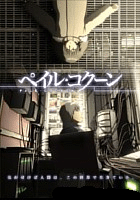 Here's the analytical breakdown for the AMV "YOKO ~ remaining deep in the ocean ~", where there's a scene-by-scene explanation and some more information about the techniques used. Please read it, as it might give you more insight in what I was thinking while editing and what the main thought and story is behind the AMV. Note that the explanations of the scenes are of the more complicated storyline I thought of, as I've created this AMV to be interpret in two ways, but more in terms of the complicated way (see below for more information).
Here's the analytical breakdown for the AMV "YOKO ~ remaining deep in the ocean ~", where there's a scene-by-scene explanation and some more information about the techniques used. Please read it, as it might give you more insight in what I was thinking while editing and what the main thought and story is behind the AMV. Note that the explanations of the scenes are of the more complicated storyline I thought of, as I've created this AMV to be interpret in two ways, but more in terms of the complicated way (see below for more information).
